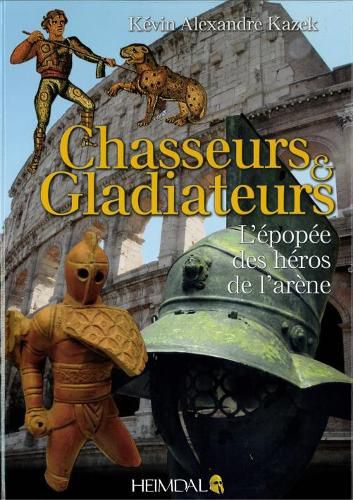Readings Newsletter
Become a Readings Member to make your shopping experience even easier.
Sign in or sign up for free!
You’re not far away from qualifying for FREE standard shipping within Australia
You’ve qualified for FREE standard shipping within Australia
The cart is loading…






Panem et circenses, bread and circuses . Juvenal’s expression denouncing the Roman plebs whose only ambitions were the distribution of free wheat and a passion for games gives a rather good idea of Roman society’s rather special character in the days of the first emperors. But you mustn’t be taken in: the picture of the Circus Maximus holding gladiator fights is sheer fiction. Except for chariot races and athletics competitions, the only fights held there involved men in arms equipped with helmets and swords (bestiarii) and hunters with spears (venatores) against ferocious beasts in the context of the venationes. The Forum was the circus during the Republic. This public space - reorganised for the occasion - was used as the showcase for the first gladiator fights well before the amphitheatre in Pompeii was created. Later, the amphitheatre was to become the inescapable symbol of town urbanism, like the Coliseum in Rome. This book offers the reader almost 800 years of history, from the proto ethnic gladiators (4th Century B.C.) to the imperial gladiator fights organised under Augustus, from hunting in the circus (mid 3rd Century B.C.) to the various arena shows, from the gladiator emperors to the Christian authors denouncing the amphitheatre’s sacrileges. Based on archaeological documentation (terra sigillata, baked earthen lamps, painted coatings, graffiti, glasswork, lapidary elements, etc.) and on solid literary sources, this study provides the most recent historical research on the subject so as to offer a more original study of this prodigious social phenomenon.
$9.00 standard shipping within Australia
FREE standard shipping within Australia for orders over $100.00
Express & International shipping calculated at checkout
Panem et circenses, bread and circuses . Juvenal’s expression denouncing the Roman plebs whose only ambitions were the distribution of free wheat and a passion for games gives a rather good idea of Roman society’s rather special character in the days of the first emperors. But you mustn’t be taken in: the picture of the Circus Maximus holding gladiator fights is sheer fiction. Except for chariot races and athletics competitions, the only fights held there involved men in arms equipped with helmets and swords (bestiarii) and hunters with spears (venatores) against ferocious beasts in the context of the venationes. The Forum was the circus during the Republic. This public space - reorganised for the occasion - was used as the showcase for the first gladiator fights well before the amphitheatre in Pompeii was created. Later, the amphitheatre was to become the inescapable symbol of town urbanism, like the Coliseum in Rome. This book offers the reader almost 800 years of history, from the proto ethnic gladiators (4th Century B.C.) to the imperial gladiator fights organised under Augustus, from hunting in the circus (mid 3rd Century B.C.) to the various arena shows, from the gladiator emperors to the Christian authors denouncing the amphitheatre’s sacrileges. Based on archaeological documentation (terra sigillata, baked earthen lamps, painted coatings, graffiti, glasswork, lapidary elements, etc.) and on solid literary sources, this study provides the most recent historical research on the subject so as to offer a more original study of this prodigious social phenomenon.